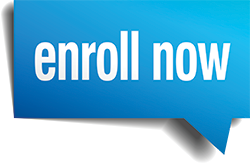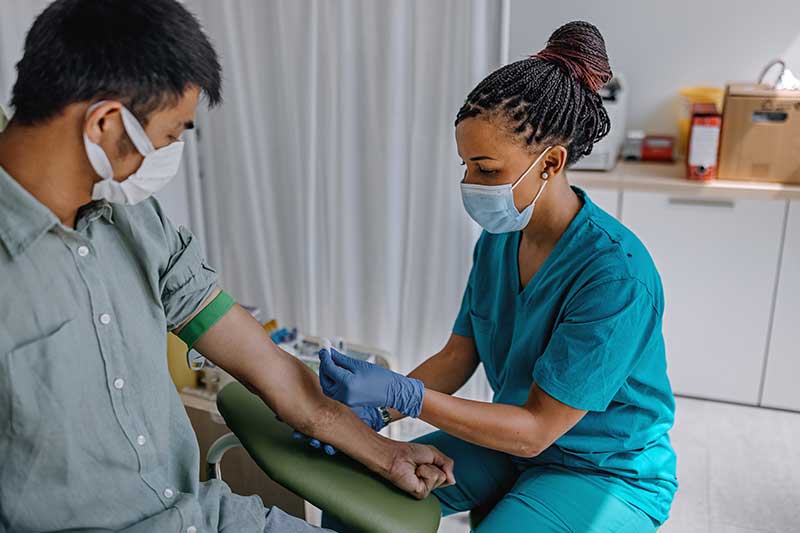Medical assistants are the go-to support specialists doctors rely on to keep their offices humming. Trained to perform both clinical and administrative tasks, they’re indispensable jacks-of-all-trades. But do medical assistants draw blood? You bet they do, and it’s one of the most valuable skills they learn.
What Does a Medical Assistant Do?
Medical assistants support doctors and nurses by handling clinical and clerical responsibilities that require skill, such as:
Triaging Patient Inquiries
Front office assistants answer the phone in private practices, but they don’t have the training to respond to medical concerns. Instead, they handle the general inquires and forward health-related calls to medical assistants.
Medical assistants have the clinical expertise to properly record patient questions so that they can present accurate information to the doctor and relay a timely, effective response.
Rooming Patients
Rooming patients is more than just walking them through hallways. The time between when they leave the waiting area and arrive in the exam room is too valuable to waste. So, as they walk, medical assistants chat with patients, observing how they move and express themselves, stopping on the way to take weight and height measurements.
Updating Medical Records
When patients visit, medical assistants review their medication and allergy lists, updating their medical records to reflect recent changes. They may also administer questionnaires and take notes about their physical complaints. By the time a doctor is ready to see the patient, they have the timeliest version of their medical information.
Taking Vital Signs
Vital signs are critical health measurements. Single readings are less valuable than trends, so medical assistants take them at each visit whether the patient feels ill or not. Subtle changes in blood pressure and heart rate over time can signal chronic conditions like hypertension and heart arrhythmias.
Maintaining Exam Rooms
Once an exam has begun isn’t a good time for a doctor to run out of supplies. Medical assistants keep the shelves stocked with all the necessities. They also sanitize rooms and disinfect shared equipment, such as thermometers and blood pressure cuffs, between visits to prevent the spread of transmissible diseases. It’s all a part of keeping patients safe.
Managing the Schedule
Front office assistants usually manage a doctor’s schedule, but medical assistants play a role. Scheduling routine exams is easy, but when patients need more complex care, medical assistants are better trained to know how much time it will take, and which resources and equipment will be needed.
Performing Diagnostic Tests
Medical assistants are trained to collect biological samples and perform a wide range of diagnostic tests from urine screens to electrocardiograms. It’s a big convenience for patients who no longer have to trek to the hospital to have these simple procedures done.
Phlebotomy
Blood tests are one of the diagnostics medical assistants help with. Not by performing the tests, but by drawing the samples. It’s one of their most essential responsibilities.
Does a Medical Assistant Draw Blood?
Medical assistants learn the art of phlebotomy in school. It’s a highly sought-after skill and a meaningful way to contribute to patient care. Phlebotomy is a technical task that requires both clinical know-how and soft skills, starting with knowing the tools of the trade.
What Tools Do Medical Assistants Use for Phlebotomy?
A medical assistant uses these tools and more to perform phlebotomy:
Nitrile Gloves
Since there’s no way to know which body fluids are contaminated, the best way to protect yourself is to assume they all are. Wearing latex-free nitrile gloves is a must to prevent skin contact with blood.
Alcohol Pads
Puncturing skin can introduce bacteria into the bloodstream and cause infection. Alcohol doesn’t sterilize the skin, but coupled with a brisk scrubbing motion, it removes enough bacteria to prevent infections. Every barrier between a patient and illness is important.
Needles
Needles come in a wide range of lengths and diameters to accommodate different patients. Diameter is measured in gauge from 12 to 28, larger gauge needles are smaller. You’ll use a 20 or 22 G on most adults but may need a 25 G for children and seniors.
Needles are available in lengths from 0.5-1.5 inches. Since most blood is drawn from the medial cubital vein in the bend of the elbow, a 1-inch needle is usually a good choice. In some patients, however, veins are deeper or more shallow than usual, so medical assistants make the judgment call, selecting the best size for their patients.
Vacuum Tubes
Phlebotomy was once performed using the same syringes used for injections, but now, there’s a better way. Sealed vacuum tubes are pressed onto the back of rubber-coated needles, eliminating the need to pull on a syringe plunger. The force of the vacuum gently pulls blood out of the vein and samples are of better quality.
Tubes are color-coded to reflect the additives they may contain. Lavender-top tubes, for example, contain sodium EDTA, a non-heparin anticoagulant required for some tests, such as red blood cell counts.
Tourniquets
The purpose of tourniquets in venipuncture is to collect blood in the extremity from which it will be taken. It makes the vein plump so that it’s easier to feel and won’t collapse when the needle is inserted.
Gauze Pads and Bandages
When the needle is withdrawn, the site must be compressed to prevent further bleeding and minimize bruising. A bandage is recommended to keep any seepage off the patient’s clothes.
The Phlebotomy Procedure
Like most medical procedures, it takes longer to gather equipment and prepare the patient than it does to perform the draw. Following these steps, it takes only a few minutes.
Seat the Patient
Most patients are comfortable in a straight-backed chair. But doctor’s offices are usually equipped with special phlebotomy chairs that have a swing-away extension on which to place the patient’s arm. Patients with a history of fainting when they have blood drawn should lay down.
Verify the Patient’s Identity
Before drawing blood, make sure the test requisition matches the patient, getting them confused will result in the wrong tests being drawn. Verify the patient’s full name and date of birth before proceeding.
Wash Your Hands
Gloves are no substitute for handwashing with soap and water. Washing and drying your hands thoroughly between each patient is the most important step you can take to prevent nosocomial infections.
Wear Gloves
Apply gloves before beginning the procedure. A snug pair will help you better palpate the vein.
Cleanse the Skin
Using an alcohol pad, scrub the needle insertion site vigorously in a circular motion, it’s the pressure and friction that removes most of the microorganisms. The alcohol will dry while you apply the tourniquet.
Apply the Tourniquet
Apply the tourniquet to the limb, a few inches above the venipuncture site, and identify the vein. Tourniquets are uncomfortable, so reassure the patient it will only be on for a moment.
Insert the Needle
Insert the needle and hold it in place. With your other hand, slide the vacuum tube into the needle holder and press it in firmly. When the blood begins to flow, release the tourniquet and fill as many tubes as ordered.
Withdraw the Needle
As you withdraw the needle, quickly apply a clean gauze pad or a cotton ball to the site. Hold it for a moment and anchor it tightly with a bandage to protect the patient’s clothes.
Dispose of Soiled Equipment
Used needles are a hazard and should be disposed of immediately after the blood draw. Place sharp objects in a puncture-proof biohazard container. Throw gloves and other used disposable supplies into the regular trash following infection control protocols.
Label the Collection Tubes
Blood cells are delicate and prone to damage if tubes are mishandled, so treat them gently as you label them and prepare them for further processing. Be certain to spell names correctly to avoid confusion.
Important Skills for Phlebotomists
Vocational school programs cover what medical assistants need to know about phlebotomy, but these soft skills will help you be more successful.
Empathy
At least half of the population has some fear of needles. An empathetic medical assistant puts themselves in a patient’s shoes and then takes measures to ease their anxiety and improve their comfort.
Critical Thinking
Phlebotomy requires sound clinical judgment. From questioning orders that aren’t clear to choosing the right size needle for a petite patient, the procedure is never the same twice. A medical assistant must be comfortable making decisions and confident enough in their abilities to know they’ll make the right one.
Manual Dexterity
Using vacuum tubes for phlebotomy has advantages, but changing tubes is challenging. You may need to fill two, three or even four to fill an order. But just a minor change in position could withdraw or partially withdraw the needle from the vein and stop the flow of blood. It takes a measure of manual dexterity to insert and remove tubes without budging. Only practice makes perfect.
Attention to Detail
Medical errors are not only expensive, but they also affect patient care. Phlebotomy is a standardized procedure, but from using the wrong tube to misspelling a patient’s name, there are many ways things can go wrong. And simple mistakes, though minor, can delay much-need treatments or require a second draw. Accuracy and attention to detail are critical skills for a medical assistant.
Final Thoughts
As private practices add services to enhance the patient experience, medical assistants with phlebotomy skills will be in even greater demand. If you’re a people person with an aptitude for science and technology, it’s an exciting role.
Medical Assistant Diploma
The Medical Assistant program is designed to teach you the administrative and clinical skills necessary to work in both back and front office settings of a doctor’s office or similar setting.
After completing the diploma program at this El Cajon | San Diego Medical Assistant School, you have the option to continue in the Medical Assistant, Associate of Applied Science program. The associate degree can be completed in an additional 6 months and contains general education courses, along with advanced medical assisting courses and classes in electrocardiography and phlebotomy.
Contact us today to learn more about medical assisting career opportunities offered at ATA College.





